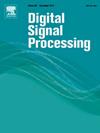Multi-modal signal adaptive time-reassigned multisynchrosqueezing transform of mechanism
IF 2.9
3区 工程技术
Q2 ENGINEERING, ELECTRICAL & ELECTRONIC
引用次数: 0
Abstract
High-end mechanical equipment often operates under non-stationary conditions, such as varying loads, changing speeds, and transient impacts, which can lead to failures. Time-frequency analysis (TFA) integrates time and frequency parameters, allowing for detailed signal analysis and is widely used in this context. To improve the accuracy of assessing the operational status of mechanical equipment, this paper proposed a multi-modal signal adaptive time reassignment multiple synchrosqueezing transform (MSST) TFA method. This method enhances the MSST method by using a local maximum technique to address energy ambiguity in TFA. Additionally, the optimal window width for each function is determined through iterative processes to better concentrate energy in the TFA. Multi-modal signals are jointly analyzed using an impulse feature extraction method for signal reconstruction, enabling multi-dimensional fault analysis. The proposed method is validated with both simulation and experimental data from a planar parallel mechanism (PPM) and is compared against classical and advanced techniques. The results show that the method effectively captures shock features in multi-modal signals, offering a more consolidated time-frequency representation (TFR) than existing TFA algorithms.
多模式信号自适应时间分配多同步阙值变换的机制
高端机械设备通常在非稳态条件下运行,如负载变化、速度变化和瞬态冲击,这些都可能导致故障。时频分析(TFA)集成了时间和频率参数,可以进行详细的信号分析,在这方面得到了广泛应用。为了提高评估机械设备运行状态的准确性,本文提出了一种多模态信号自适应时间重分配多重同步阙值变换(MSST)TFA 方法。该方法通过使用局部最大值技术来解决 TFA 中的能量模糊问题,从而增强了 MSST 方法。此外,通过迭代过程确定每个函数的最佳窗宽,以更好地集中 TFA 中的能量。使用脉冲特征提取方法对多模态信号进行联合分析,以重建信号,从而实现多维故障分析。利用平面并联机构 (PPM) 的模拟和实验数据对所提出的方法进行了验证,并与经典和先进技术进行了比较。结果表明,与现有的 TFA 算法相比,该方法能有效捕捉多模态信号中的冲击特征,提供更全面的时频表示(TFR)。
本文章由计算机程序翻译,如有差异,请以英文原文为准。
求助全文
约1分钟内获得全文
求助全文
来源期刊

Digital Signal Processing
工程技术-工程:电子与电气
CiteScore
5.30
自引率
17.20%
发文量
435
审稿时长
66 days
期刊介绍:
Digital Signal Processing: A Review Journal is one of the oldest and most established journals in the field of signal processing yet it aims to be the most innovative. The Journal invites top quality research articles at the frontiers of research in all aspects of signal processing. Our objective is to provide a platform for the publication of ground-breaking research in signal processing with both academic and industrial appeal.
The journal has a special emphasis on statistical signal processing methodology such as Bayesian signal processing, and encourages articles on emerging applications of signal processing such as:
• big data• machine learning• internet of things• information security• systems biology and computational biology,• financial time series analysis,• autonomous vehicles,• quantum computing,• neuromorphic engineering,• human-computer interaction and intelligent user interfaces,• environmental signal processing,• geophysical signal processing including seismic signal processing,• chemioinformatics and bioinformatics,• audio, visual and performance arts,• disaster management and prevention,• renewable energy,
 求助内容:
求助内容: 应助结果提醒方式:
应助结果提醒方式:


